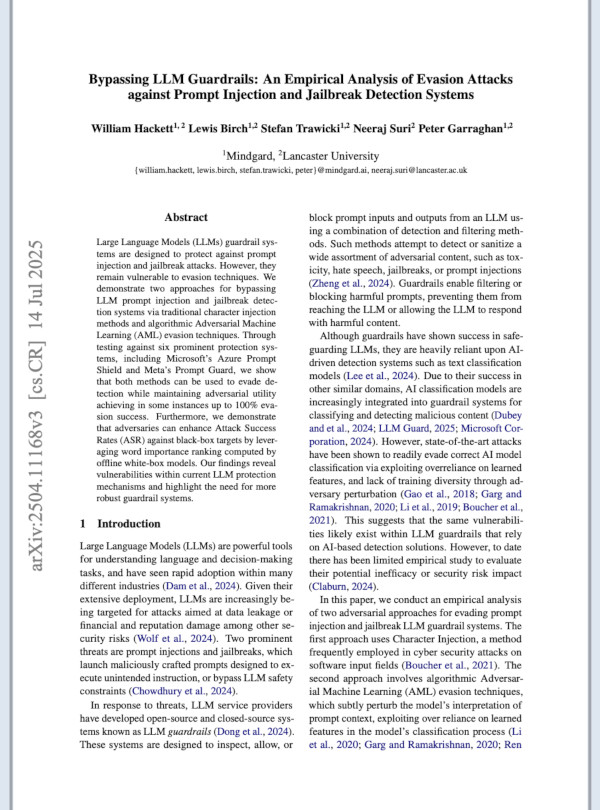The Evolution of AI Security and Governance
As artificial intelligence continues to transform industries, ensuring its security, reliability, and compliance has become a top priority. Gartner's AI Trust, Risk, and Security Management (AI TRiSM) framework provides a structured approach to managing AI risks while maintaining transparency and accountability. By focusing on governance, real-time monitoring, data integrity, and infrastructure security, AI TRiSM helps organizations deploy AI systems responsibly and securely.
Breaking Down Gartner's AI TRiSM Framework
Gartner defines AI TRiSM as a multi-layered approach to securing AI across different environments. The framework consists of four essential layers:
- AI Governance: Establishing visibility, traceability, and control over AI models and their decision-making processes.
- AI Runtime Inspection & Enforcement: Monitoring AI applications in real time to detect anomalies, policy violations, and security threats.
- Information Governance: Ensuring AI systems access only approved and properly classified data.
- Infrastructure & Stack Security: Implementing foundational security measures for AI workloads, including endpoint, network, and cloud protections.
These layers work together to provide enterprises with end-to-end AI security, mitigating risks from data leaks, biases, and unintended outputs.
Key Insights from the 2025 AI TRiSM Market Guide
What is Gartner AI TRiSM? The latest Gartner AI TRiSM Market Guide highlights several critical findings:
- Top AI Risks: Enterprises are primarily concerned with data compromise, third-party risks, and inaccurate AI outputs.
- Emerging Threats: Malicious AI attacks remain rare, but internal data oversharing and rogue AI behaviors are prevalent.
- Layered Defense: AI security measures must integrate traditional cybersecurity protections with AI-specific controls.
- Rising Demand: Organizations increasingly seek AI TRiSM solutions, fueling competition among vendors.
- Diverse Vendor Approaches: Some providers emphasize security and risk mitigation, while others focus on compliance and ethical AI practices.
- No One-Size-Fits-All Solution: Enterprises must combine multiple tools and frameworks to cover all AI risk aspects.
- Organizational Shifts: AI TRiSM initiatives are driving cross-functional collaboration between security, compliance, and data teams.
How Gartner’s Market Guide Helps Enterprises
Gartner's Market Guide provides an overview of AI TRiSM solutions, helping organizations:
- Understand the evolving AI risk landscape.
- Identify best practices for AI security and compliance.
- Explore vendor capabilities and market trends.
- Develop an AI risk management strategy aligned with industry standards.
Unlike Gartner's Magic Quadrant, which evaluates established vendors, the Market Guide focuses on emerging solutions and evolving technologies within AI security and governance.
Core Components of AI TRiSM Solutions
Gartner outlines four mandatory capabilities that AI TRiSM solutions must include:
- AI Cataloging: Maintaining an up-to-date inventory of AI models, applications, and datasets.
- Data Mapping and Lineage: Tracking data usage across AI systems to ensure integrity and compliance.
- Continuous Monitoring and Assurance: Assessing AI performance, reliability, and security in real time.
- Enforcement Mechanisms: Implementing runtime security measures to mitigate AI-driven threats.
Organizations that adopt AI TRiSM best practices can significantly reduce AI-related risks while ensuring compliance with regulatory requirements.
The Future of AI TRiSM: Key Trends Shaping the Market
Gartner identifies four major trends influencing the AI TRiSM landscape:
- Cross-Functional AI Security Teams: Companies are integrating AI governance, security, and compliance functions to manage risks more effectively.
- Unified AI Monitoring Platforms: Enterprises are shifting towards centralized AI security solutions for real-time policy enforcement.
- AI Security Offerings from Major Cloud Providers: Tech giants like Microsoft, Google, and AWS are expanding their AI security services.
- Vendor Consolidation: AI security startups are merging with established cybersecurity firms to provide comprehensive AI protection.
How Mindgard Supports AI TRiSM Compliance
Mindgard provides end-to-end AI security solutions that align with Gartner’s AI TRiSM framework, ensuring enterprises can deploy AI confidently and securely.
AI Governance & Oversight
Mindgard offers AI cataloging, continuous risk assessments, and compliance tracking to help organizations maintain control over their AI systems. Our platform enables transparent AI decision-making while supporting regulatory compliance.
Real-Time AI Security Monitoring
Mindgard’s AI runtime inspection tools detect anomalies, unauthorized access, and policy violations, ensuring AI models function as intended. Automated alerts and response mechanisms prevent security incidents before they escalate.
Data Integrity & Access Control
With advanced data mapping and lineage tracking, Mindgard ensures AI systems only use properly classified and permissioned data, minimizing the risk of breaches and unauthorized data exposure.
AI Security Infrastructure
Mindgard integrates seamlessly into existing enterprise security ecosystems, providing API security, confidential computing, and workload protection across cloud, hybrid, and on-premises environments.
By leveraging Mindgard’s AI security solutions, organizations can align with Gartner AI TRiSM recommendations, safeguard their AI deployments, and maintain trust in their AI-driven operations.
Stay Ahead with AI TRiSM
As AI adoption accelerates, ensuring trust, security, and compliance is more critical than ever. Gartner’s AI TRiSM Market Guide provides a roadmap for enterprises looking to implement robust AI governance and risk management strategies.
To learn more, explore the official Gartner Market Guide or chat with us to learn how Mindgard can help secure your AI initiatives.





